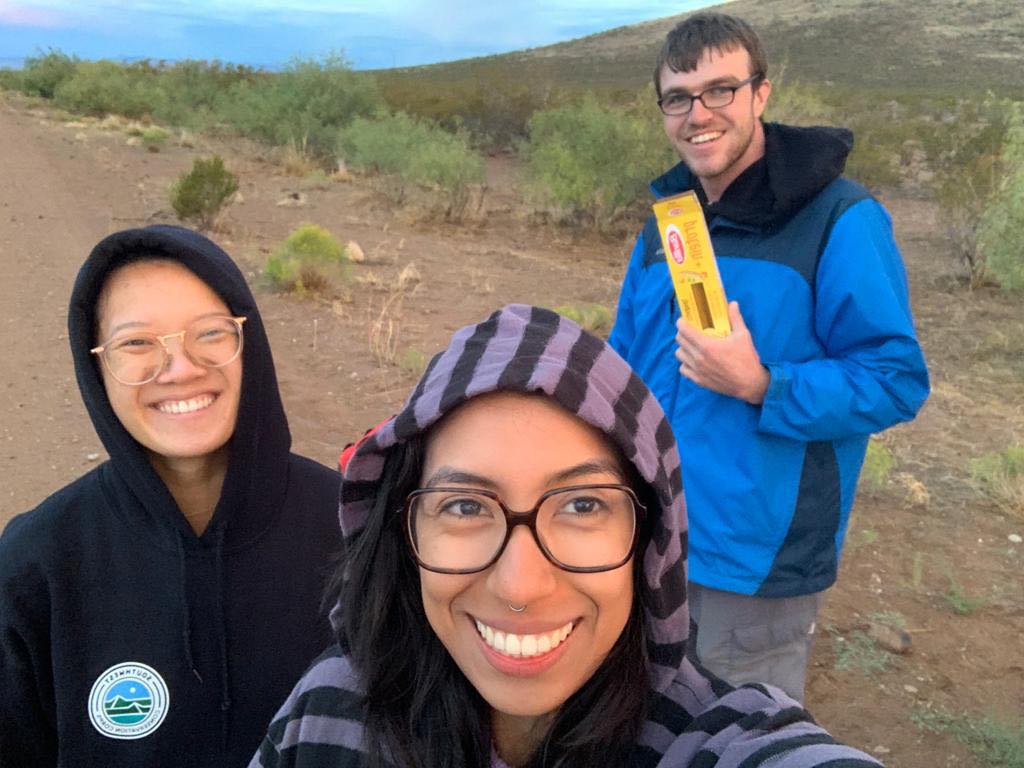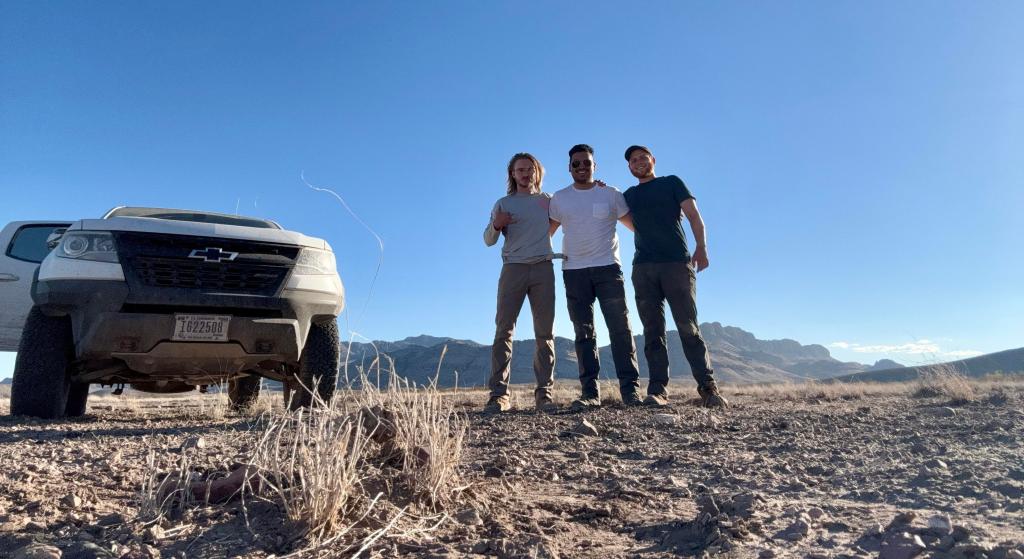By Liz Plazewski, January 2024
Every July—in the heat of the desert summer—field crews gather in Las Cruces, New Mexico to begin a season of ecological landscape monitoring. These field crews congregate to implement the Bureau of Land Management’s Assessment, Inventory, and Monitoring (BLM, AIM) strategy out of the BLM Las Cruces District Office (LCDO). IAE Southwest Botanist, Liz Plazewski, currently acts as the Project Lead for the Las Cruces Terrestrial AIM Crews. Liz has done 4 seasons of AIM, 3 of which were out of the LCDO, and now trains and mentors the crews throughout their field season.

The AIM strategy consists in collecting detailed landscape and vegetation data across various Ecological Sites on BLM-managed land. Field crews collect their data via a series of standardized methodologies and randomized plot locations. The methodologies include (1) recording vegetation cover and soil surface data through Line Point Intercept, (2) determining Ecological Site from digging and texturing a soil pit, and (3) notating a complete vascular vegetation composition through Species Inventory, to name a few. After many levels of Quality Control and Quality Assurance, each year’s data is published to be used, summarized, and analyzed. AIM data, since it is collected on public lands, is primarily used by the BLM but is accessible to the public as well. For more information on the AIM strategy and for access to the public data portal, visit blm.gov/aim.

This past 2023 field season, which took place in July through December, LCDO hosted 2 AIM field crews consisting of two crew members and one crew lead each. The crews successfully completed 76 plots distributed across the District in Hidalgo, Grant, Luna, Sierra, Doña Ana, and Otero counties of New Mexico.
When asked about her highlight of the field season, Crew Member Alaine Quinn shared: “All of the cool places we went to! It’s fun being out in the middle of nowhere. With our work as an AIM crew, we go to such remote areas, and we gain a deeper understanding of the landscape.”
Crew Lead Pilar Fuentes felt AIM was important in many ways, especially when it comes to building communal connections: “Oftentimes we are the only people that ranch workers interact with from the BLM, since their ranches are so remote. I feel the work we are doing has the opportunity to strengthen the relationship between stakeholders and the government.”


The crewpersons reflected on their season: “I learned a lot about how to identify plants without flowers—looking at nodes, collars, growth patterns. . . I increased my botany skills, for sure” said Pilar. Alaine added, “It was a great field experience. We learned so many different field methods and protocols—many useful skills that are important for going into a natural resources career.”
As the 2023 field season is wrapping up, Liz is planning and preparing for 2024’s season. The Las Cruces District Office now has eight seasons of Terrestrial AIM field data collected, a total of 1,035 plots sampled with 171 of those resampled to monitor the change in the landscape over time. Although it is still being planned and mapped out, the 2024 field season is expected to involve more resampling and a May start date! A very special thanks to the Southwest Conservation Corps, who employs the New Mexico AIM crews, and the Las Cruces and New Mexico State BLM for the support for this program.